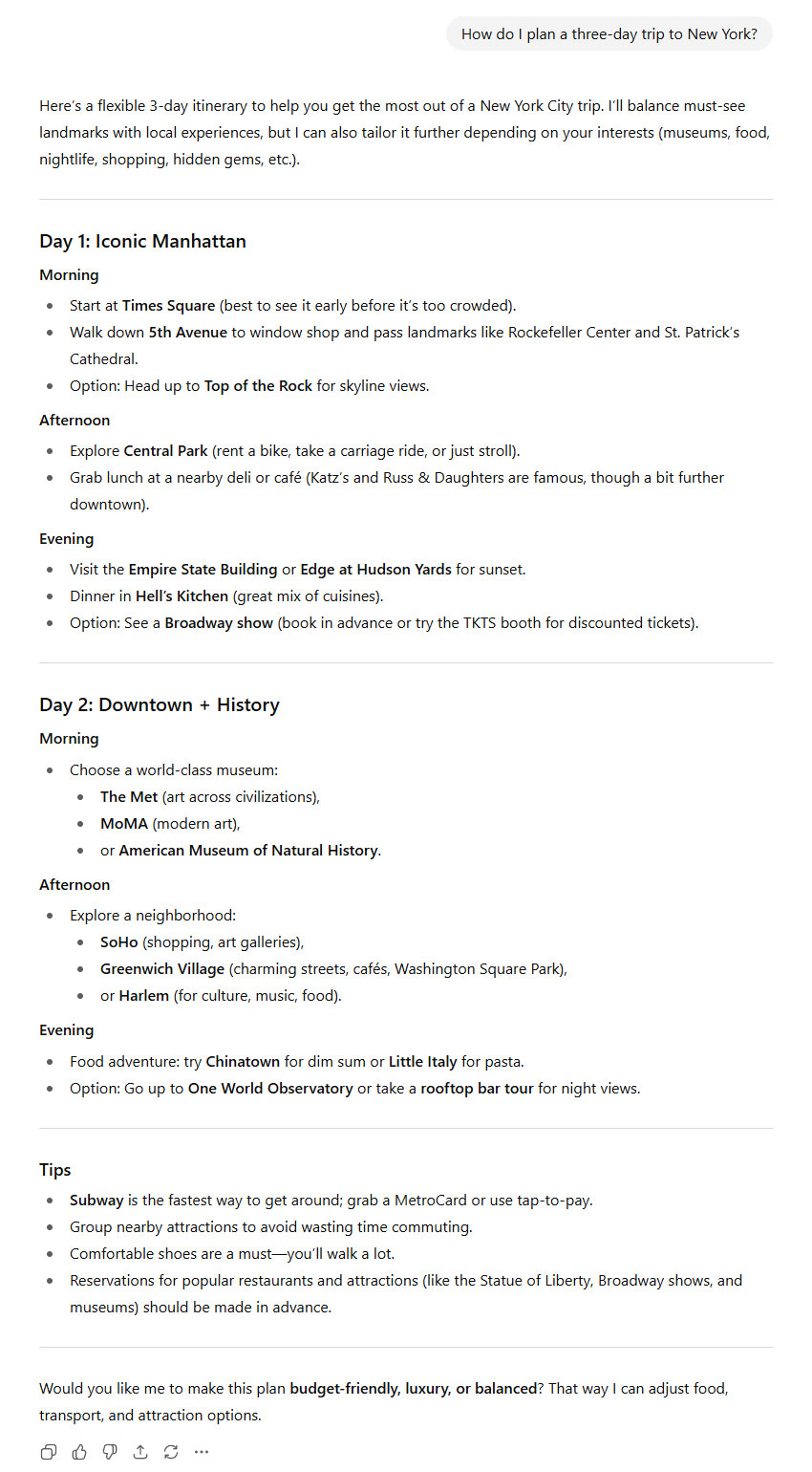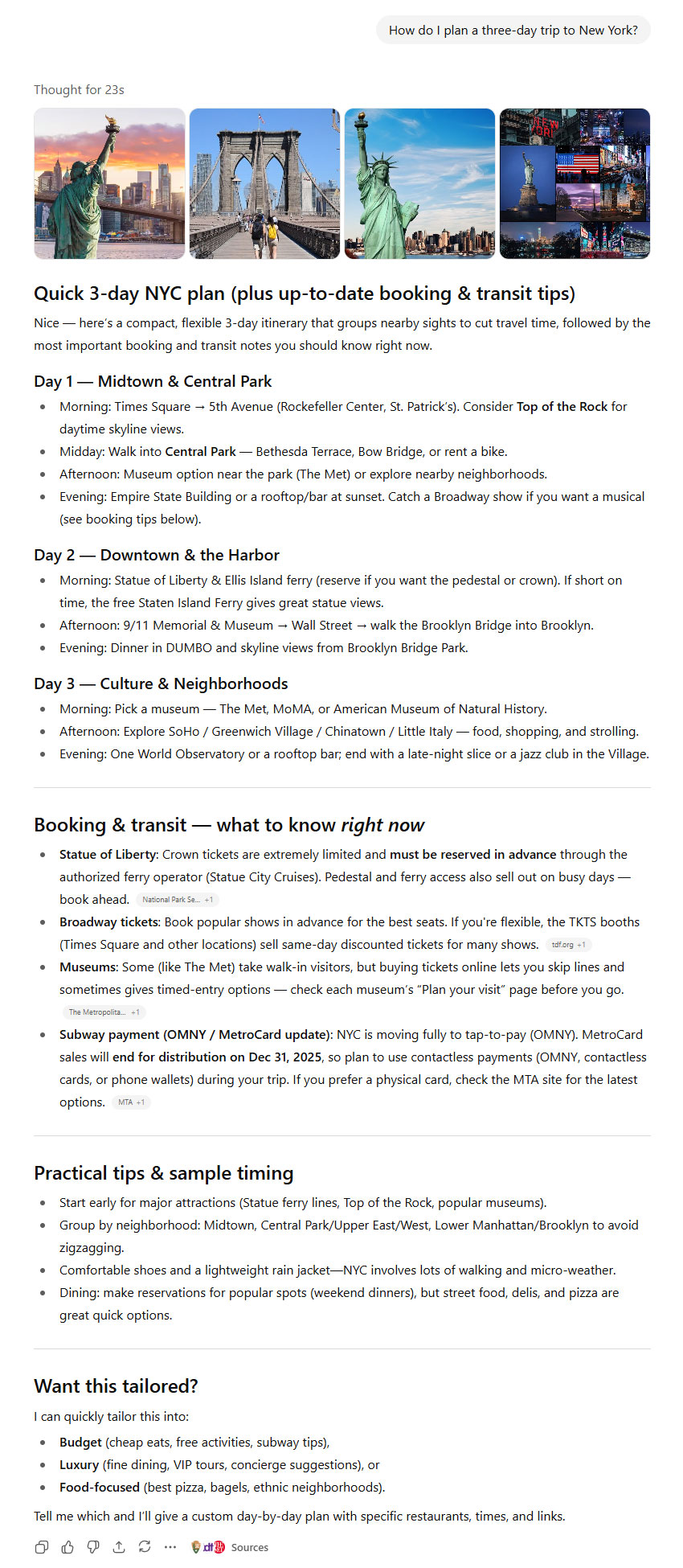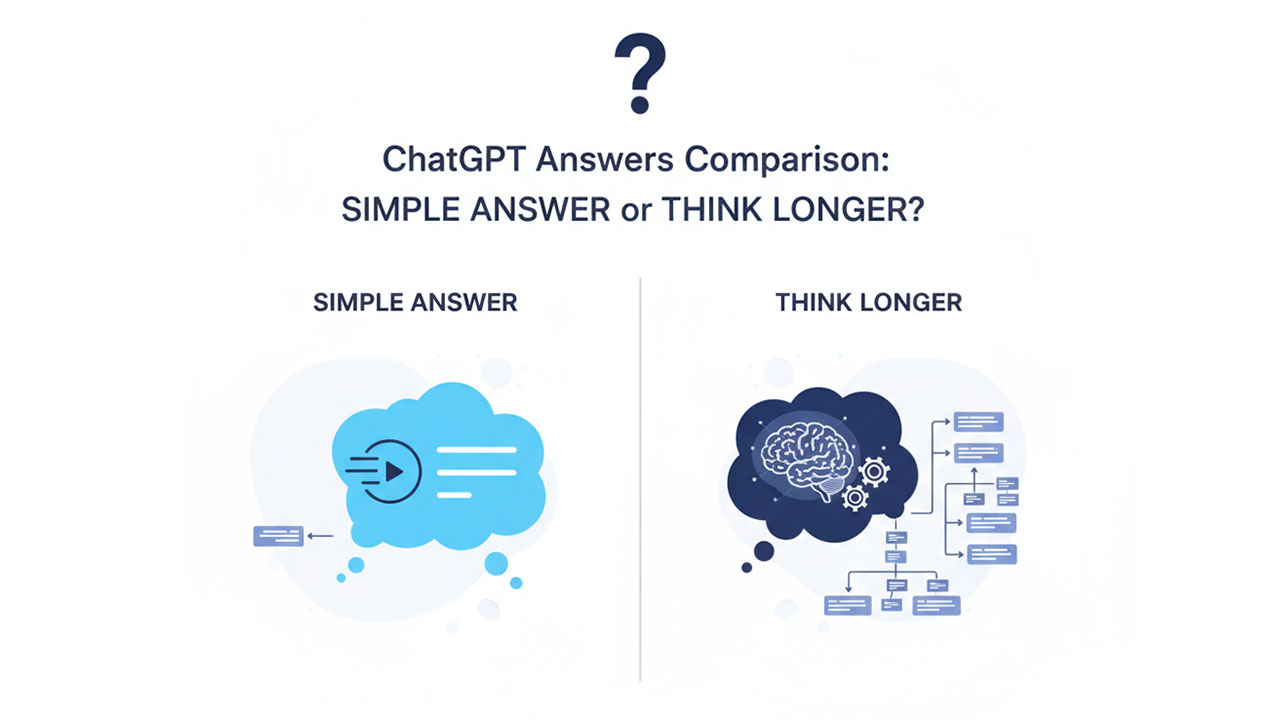We’ve all seen those quick, default answers from ChatGPT. But with the addition of Think longer, a question is likely on many people’s minds: does this feature actually make a difference? And is that deeper dive worth the wait?
I’ve had this question myself, so I’m going to test it out. I’ll ask a question and have ChatGPT answer it twice: once with a default mode, and once with the Think longer mode.
Stick around, because by the end, I’ll show you the pros and cons of each and help you decide which one is right for your next big question.
Default Answer
First up, let’s talk about the standard answer you get from ChatGPT. This is the default mode we all use for everyday questions. It’s like having a quick chat with a friend who’s busy and just wants to get straight to the point, without any fluff or extra details.
These answers are super fast and get right to the core of what you asked. If you need a quick definition, a short list, or a straightforward answer, this is your go-to option. For things like asking what a certain word means or “what movie should I watch?”, this mode handles it perfectly with zero fuss. So, basically, whenever you’re in a hurry and just want a quick, simple answer, this default setting is exactly what you need.
When ChatGPT Think Longer
Now for the more interesting part. This is where ChatGPT really rolls up its sleeves and does some Think longer. Unlike the first mode where it just gives a simple answer, here it’s like it’s solving a problem step-by-step and then gives you the final answer with a ton of detail.
I usually use this feature when I have a complex question, like a tough math problem or a coding task where I don’t know where to start. The result I get is much more complete, and it feels like I can actually see how the AI is figuring things out to get to the answer. This way, I not only get a more accurate response but I also understand the logic behind it.
Default Answer vs Think Longer
I asked ChatGPT how to plan a three-day trip to New York.

The first answer was a classic, well-organized travel plan. Everything was neat and categorized; it separated Day 1, Day 2, and Day 3, and outlined morning, afternoon, and evening activities for each. At the end, it threw in some general, practical tips like using the subway and wearing comfortable shoes. It was good, but it was exactly the standard travel plan I expected.

But the second answer, with the Think Longer mode, was a whole different story. While the itinerary was pretty much the same, it went way beyond a simple plan. It added a separate section called “Booking & transit — what to know right now” that gave me some seriously useful and specific info. For example, it mentioned that the MetroCard is being phased out and I should use the new OMNY system. It even gave me official links to booking websites and explained I need to reserve Statue of Liberty tickets in advance to avoid problems. This shows that instead of just answering the question, it tried to anticipate my potential real-world problems and provide solutions.
Choosing between the two is simple. the first answer is great for a quick overview, but the second one is much better for someone who’s actually trying to plan a trip and needs practical details. It’s like ChatGPT in Think Longer mode understood that just providing a list wasn’t enough; it needed to include actionable, real-world information.
| Feature | Default Answer | Think Longer Answer |
|---|---|---|
| Speed | Super fast | Takes a bit longer to process |
| Depth | Quick and concise, without any additional explanations | Provides a lot of additional detail and context |
| When to Use It | When you are in a hurry | When your question is complex and you need practical, real-world info |


